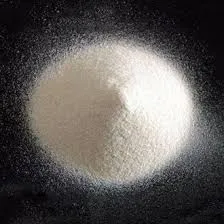
Oct . 16, 2024 19:32 Back to list
Understanding the Potential Side Effects of HPMC in Various Applications
Understanding the Side Effects of HPMC
Hydroxypropyl methylcellulose (HPMC) is a widely used cellulose ether derived from plant sources, and it serves various purposes in food, pharmaceutical, and cosmetic industries. Its unique properties such as viscosity, film-forming capacity, and ability to retain moisture make it a popular choice in various formulations. However, like many substances, HPMC might have side effects that users should be aware of, especially when used in specific applications or consumed in large quantities.
HPMC in Pharmaceuticals
In the pharmaceutical realm, HPMC is often utilized as an excipient to enhance the stability and bioavailability of medications. While it is generally considered safe, some individuals may experience side effects. For instance, a small percentage of patients may suffer from gastrointestinal issues such as constipation or diarrhea when consuming products containing HPMC. These effects often result from HPMC’s high viscosity, which can influence the gut motility.
Additionally, allergic reactions to HPMC can occur, although they are rare. Symptoms may include rashes, itching, or more severe anaphylactic responses. It’s crucial for patients to disclose any known allergies to their healthcare providers before starting a new medication that contains HPMC.
HPMC in Food Products
HPMC is commonly employed as a food additive, often used as a thickener, emulsifier, or stabilizer in a variety of products, including sauces, dressings, and gluten-free baked goods. From a dietary perspective, HPMC is generally recognized as safe (GRAS) by regulatory agencies. However, excessive consumption might lead to adverse effects such as digestive disturbances. High fibrous content can result in symptoms like bloating, gas, or stomach cramps.
hpmc side effects

Moreover, some people may have sensitivities or intolerances to certain food additives, including HPMC. Symptoms might include nausea or an upset stomach after consuming foods that contain this ingredient. People with underlying gastrointestinal conditions, such as irritable bowel syndrome (IBS), might find that consuming HPMC-rich foods exacerbates their symptoms.
HPMC in Cosmetics
In cosmetics, HPMC is frequently used as a thickening and binding agent in creams, lotions, and other formulations. While it generally enhances product texture and stability, skin irritation can sometimes occur. Individuals with sensitive skin or allergies may experience redness, itching, or rashes after applying cosmetics that contain HPMC. It’s advisable for such individuals to conduct a patch test before using a new product extensively.
Safety Considerations
Despite these potential side effects, it's important to note that HPMC is often well-tolerated by the majority of the population. Regulatory bodies like the U.S. Food and Drug Administration (FDA) and the European Food Safety Authority (EFSA) have affirmed its safety when used within recommended guidelines. Users must be cautious, especially when trying new products or treatments containing HPMC. Monitoring how your body reacts can aid in identifying any adverse effects and determining if HPMC is suitable for you.
Conclusion
In summary, Hydroxypropyl methylcellulose is a versatile compound with widespread applications, notably in pharmaceuticals, food products, and cosmetics. While generally safe, awareness of potential side effects is crucial. Individuals may experience gastrointestinal issues, allergic reactions, or skin irritations stemming from HPMC use. It is essential to follow recommended guidelines and consult healthcare professionals when necessary, especially for those with pre-existing health conditions or sensitivities. As always, listening to your body and observing how it reacts to new substances is the best practice for maintaining health and well-being.
-
Versatile Hpmc Uses in Different Industries
NewsJun.19,2025
-
Redispersible Powder's Role in Enhancing Durability of Construction Products
NewsJun.19,2025
-
Hydroxyethyl Cellulose Applications Driving Green Industrial Processes
NewsJun.19,2025
-
Exploring Different Redispersible Polymer Powder
NewsJun.19,2025
-
Choosing the Right Mortar Bonding Agent
NewsJun.19,2025
-
Applications and Significance of China Hpmc in Modern Industries
NewsJun.19,2025







